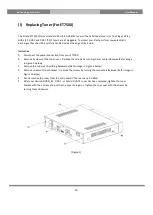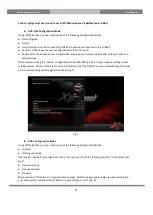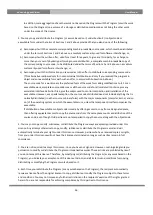
28
eXtrending your Vision
User Manual
Fig. 12
Amongst other things, the below parameters are what you need to decide prior to performing manual scan.
1.
Tuner
You need to decide which tuner you want to use for manual scan.
2.
System
Here you have two options between DVB-S (SD) and DVB-S2 (HD).
3.
Frequency
You need to enter the exact frequency of the transponder that you want to scan.
4.
Symbol Rate
You need to enter the exact symbol rate of the transponder that you want to scan
5.
Polarity
Here, you have options for Horizontal, Vertical, Circular Left and Circular Right. You need to know the polarity of
the transponder that you want to scan.
6.
FEC (Forward Error Correction)
You need to enter the exact FEC value of the transponder that you want to scan
7.
Modulation
Here you have two options for QPSK (SD) and 8PSK (HD).
8.
Network Scan
Here you have two options for “
YES”
and “
NO”
. “
NO”
is used to scan the transponder (TP) based on the data
that your STB currently has. “
YES”
is used to scan the TP not just based on the existing TP data but also using
new TP data, if there is TP data newly transported from the TP. Naturally, “
YES”
option takes longer while it may
results in a better scan result.
9.
Clear Before Scan
“YES”
is used when you want to delete the existing channel list before you start the automatic scan. If you want
to keep the existing list, select “
NO”
.
10.
Only Free Scan
Here you have two options for “
YES”
and “
NO”
. You want to scan only Free to Air channels without any
encryption, select “
YES”
. Otherwise, select “
NO”
to scan all FTA and CAS channels.

























